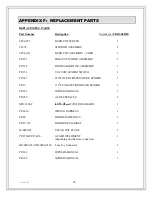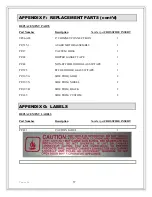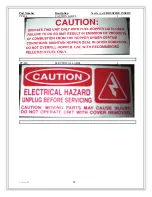
Version
4.0
55
As a final note, the two basic stages of corn burning are:
a)
Somewhere around 1100
o
F the corn fuel particles have combined with oxygen molecules
and released the majority of the available energy. Some gases will still not have reached
ignition temperature and at this critical stage, if too much heat is removed from the
combustion chamber, no more fuel will be burnt. All remaining fuel will simply exhaust
through the system as unburned material.
b)
At temperatures around 1500
o
F the remaining gases and tars will burn off in the
combustion chamber. This final combustion yields an additional 10 to 20% additional
heat energy and gives a very clean final exhaust from the product.
Corn pellets, as compared to wood logs, enhance the amount of energy released during the burn cycle
because of the uniformity of product, the reduced moisture content, and the variation in materials used to
produce the wood pellet. These variations allow the turbulence in the burn system to ensure a better
agitation of fuel with air and a more rapid and efficient burn. As other biomass fuels are utilized,
optimum mixes of pellets will ensure clean burning, reduced emission systems are available that compete
favorably in the consumer market.
The homeowner must be aware that as technology evolves, all stove manufacturers will strive to control
more of the variables that might adversely affect the combustion process. In addition, stove
manufacturers will strive to optimize the efficiency of the products burn process. It is the homeowner’s
responsibility to understand not only the particular product but also how environmental issues beyond the
control of both the manufacturer can affect a product’s burn process. This understanding will make
trouble diagnosis less time consuming and more accurate for all parties involved in maintaining the
product in a reliable manner to the satisfaction of our mutual customers.




































